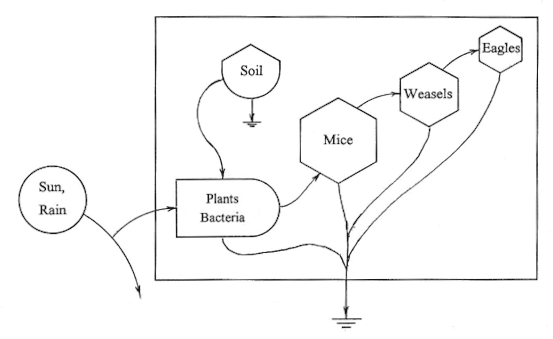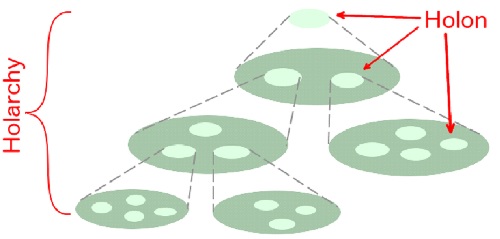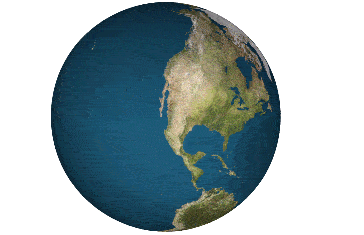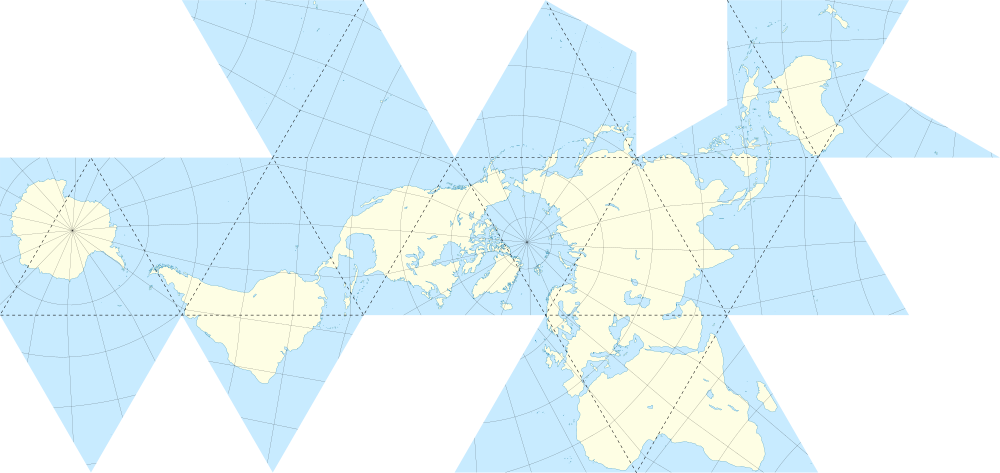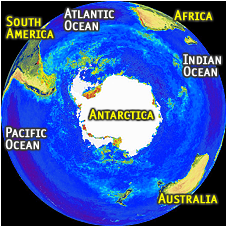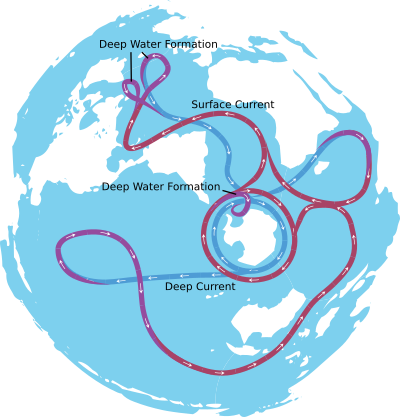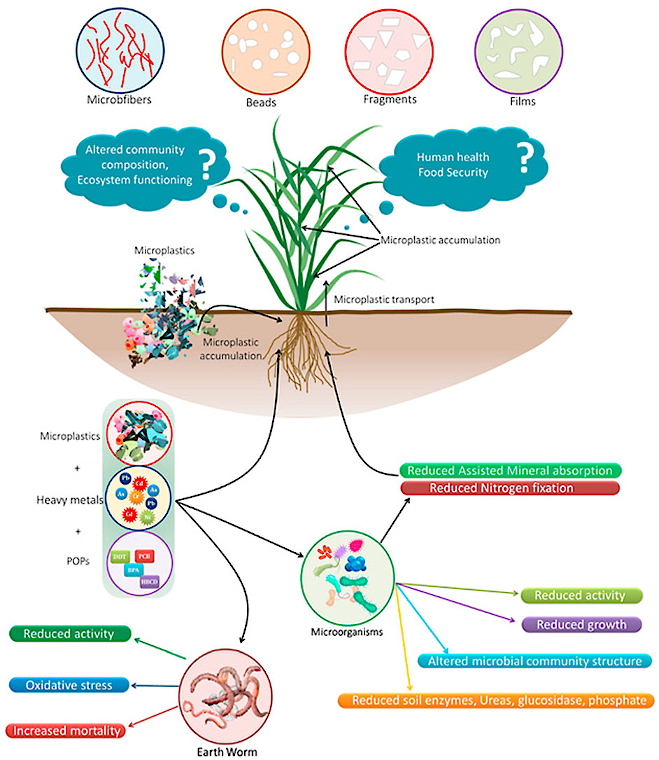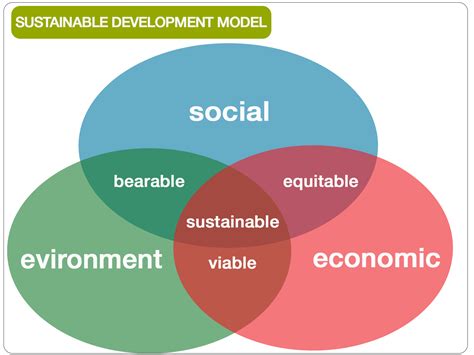Back • Return Home
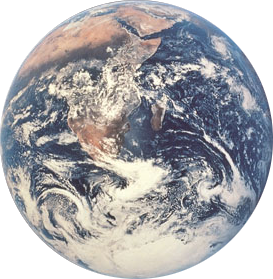
Becoming Custodians of Nature
This article deals with where humanity generally seems to be going and offers some practical suggestions on what we can do about it before it is "too late". As dire as some of it seems, this information is not intended to induce fear, but to give hope. While the task at hand is complex, it is not "impossible" to face it. [Potentially useful resources are hyperlinked throughout. However, please keep in mind that this is not necessarily an endorsement of everything that they contain.]
Contents
• Is This The Worst-Case Scenario?
• Healing The Schism
• Searching For A System That Works
• Phase 1: Human Bodies Are Not In Nature, They Are Nature
• Phase 2: Planning To Thrive & Making The Transition
• Phase 3: Organizations (Their Structure, Function, & Purpose)
• Cosmic Consciousness
• Conclusion
Is This The Worst-Case Scenario?
[Note: If this section is mentally-emotionally overwhelming, please skip to the next section. Sometimes we need to be shaken awake in order to realize how serious the situation is though.]
Humankind is currently causing the "sixth mass extinction event" through pollution and environmental degradation. Huge swaths of living creatures are dying off, while severe and seemingly irreversible climate change is occuring. Based on computer models of various trends, a research team at MIT predicted in 1972 that human society as a whole was headed towards complete collapse. They came to the same conclusions after updating their research several times (in 1992 and 2004), and studies done by others in 2020 point out that nothing much has changed. This is just a small sampling of these types of studies too!
Assuming that these trends persist, we have approximately 10 years to completely overhall nearly all aspects of our worldwide infrastructure to serve everyone and everything, including the Natural environment.
We cannot necessarily rely on "leaders" for guidance. This is not an issue of pride, but one of trust and accountability. To quote the article "Senior Executives Are More Likely To Be Psychopaths" by Stephanie Sarkis [with some extra resources linked throughout]:
Did you think that your boss might be a psychopath? You might be on to something. About 1 percent of the population may qualify as having psychopathic behavior, while among senior executives, that rate climbs to 3.5 percent. This all may make sense, as psychopaths tend to be focused on status, money, and power. That's not to say that someone who is focused on those three things is a psychopath; it's just that psychopaths tend to be focused on them more than the average person. There is a term for people in executive positions that display psychopathic behaviors - "corporate psychopaths."
The route to being a psychopathic senior executive may start early. Business majors are more likely to have psychopathic tendencies than other students. They are more likely to deceive others for personal gain. However, just because they are more likely to engage in deception doesn't mean they endorse it as acceptable behavior. Interestingly, those same deceiving business students find it unethical to deceive others. This may be due to the psychopath's belief that he has different rules to play by than others. He requires others to be ethical and loyal, while the psychopath feels no compunction to follow those same societal norms.
Psychopathic behavior is marked by knowing right from wrong, but engaging in immoral and illegal behavior anyway; sabotaging others; pitting people against each other; manipulating of others; displaying "cognitive empathy," but not true empathy; having a facade of charisma; engaging in criminal activities; and lacking remorse for behavior. This behavior tends to have deep roots and is seen by mental health professionals as difficult to treat. This is due, in part, to the fact that people who have psychopathic behavior, as seen in antisocial personality disorder, have an "ego-syntonic" personality. This means that the psychopath thinks that everyone else has a problem and that he or she is just fine, thank you very much. One of the fundamental tenets of successful treatment is that the person must have some acknowledgment that his behavior is detrimental to himself or others - and you generally don't see that in psychopaths.
Some argue that these psychopathic tendencies help the psychopath succeed in upper management positions. However, psychopathic leaders not only bring staff down, but they can also bring the entire organization to a screeching halt. In a case study by University of Tasmania professor Clive Boddy Ph.D., a CEO with a high psychopathy score worked in a charity in the United Kingdom. Under his leadership, there were not only issues for the staff, such as bullying and staff turnover, but for the organization at large. There was a decrease in revenue under his psychopathic leadership, a decrease in employee creativity, and a decrease in innovation. The workplace did not have these issues when the previous CEO headed the organization. The previous CEO was described as genuine, effective, and a "transformational leader" - everything the current psychopathic leader was not. The difference in leadership not only provided valuable information as to the origin of the charity's dysfunction but also provided a stark comparison as to how one leader can make or break an organization.
How does a company handle having a psychopath in charge? Get your board of directors to take action. They have the influence and power to get this person removed from their role in the company. If you are working for a smaller company without a board of directors, seek legal counsel. If you are in the United States, become familiar with the Equal Employment Opportunity Commission's definition of harassment. Psychopaths usually have a pattern of bullying and harassing others.
If a psychopathic leader is allowed to continue with their behavior, there will most likely not be any company left. The decision to act to remove a psychopath from power must be made swiftly, yet with adequate consultation. In the future, look for early signs of psychopathic behavior as early as during the interview process. It can be difficult to "pinpoint" a psychopath, as he tends to act like everyone else, at least at the beginning of his tenure with your company. However, over time that facade drops, and you see the psychopath as a harbinger of destruction.
We have spoken a little bit about destructive human traits and some of the reasons why they appear elsewhere. The thing that we want to emphasize here is how strongly that they can affect the social environment, whether expressed by people within a business, a government, or some other context. To quote The Pathocracy Blog:
Definition: pathocracy (n). A system of government created by a small pathological minority that takes control over a society of normal people (from Political Ponerology: A Science on the Nature of Evil Adjusted for Political Purposes, by Andrew Lobaczewski)
[...] from Greek pathos, "feeling, pain, suffering"; and kratos, "rule"
A totalitarian form of government in which absolute political power is held by a psychopathic elite, and their effect on the people is such that the entire society is ruled and motivated by purely pathological values.
A pathocracy can take many forms and can insinuate itself covertly into any seemingly just system or ideology. As such it can masquerade under the guise of a democracy or theocracy as well as more openly oppressive regimes.
Characteristics
1. suppression of individualism and creativity.
2. impoverishment of artistic values.
3. impoverishment of moral values; a social structure based on self-interest and one-upmanship, rather than altruism.
4. fanatical ideology; often a corrupted form of a valid viable 'trojan' ideology which is perverted into a pathological form, bearing little resemblance to the substance of the original.
5. intolerance and suspicion of anyone who is different, or who disagrees with the state.
6. centralized control.
7. widespread corruption.
8. secret activities within government, but surveillance of the general population. (In contrast, a healthy society would have transparent government processes, and respect for privacy of the individual citizen).
9. paranoid and reactionary government.
10. excessive, arbitrary, unfair and inflexible legislation; the power of decision making is reduced/removed from the citizens' everyday lives.
11. an attitude of hypocrisy and contempt demonstrated by the actions of the ruling class, towards the ideals they claim to follow, and towards the citizens they claim to represent.
12. controlled media, dominated by propaganda.
13. extreme inequality between the richest and poorest.
14. endemic use of corrupted psychological reasoning such as paramoralisms, conversive thinking and doubletalk.
15. rule by force and/or fear of force.
16. people are considered as a 'resource' to be exploited (hence the term "human resources"), rather than as individuals with intrinsic human worth.
17. spiritual life is restricted to inflexible and indoctrinare schemes. Anyone attempting to go beyond these boundaries is considered a heretic or insane, and therefore dangerous.
18. arbitrary divisions in the population (class, ethnicity, creed) are inflamed into conflict with one another.
19. suppression of free speech - public debate, demonstration, protest.
20. violation of basic human rights, for example: restriction or denial of basic life necessities such as food, water, shelter; detainment without charge; torture and abuse; slave labour.
Even if one does not accept these specific statistical projections and other bits of research as true, we don't have to look very hard at the world around us in order to find the destructive or dangerous. For example, I can turn on the television to see people fighting, or walk outside and see garbage littering the streets. These are things that are within every person's power to influence or change for the better, and each of us has a part in doing so.
We have pointed out several significant and easily verifiable problems that exist within all kinds of governments, economies, and religions before. Most of them can be traced back to two perceptions that every person must transform within themselves: elevation of self and objectification of others.
Prejudices (e.g.: sexism, racism, classism, nationalism, and so on) are often founded in objectification, and equality is impossible to the extent that any person insists that they are "more important" than any other.
Many systems (such as school, work, the media, etc.) exacerbate these issues, fostering mindsets which disconnect oneself from both the Natural environment and the humanity of the people around them. Again, most of the problems on an individual level (e.g.: lack of necessary resources, burnout, isolation, etc.) and on a collective level (e.g.: despotism, the collapse of economies and ecosystems, etc.) stem from this separation.
Self-responsibile action that is done with sincere respect for all other selves is literally the only option. Inertia is driving the vast majority of the population towards endless consumption and waste, fighting for control over a seemingly finite amount of resources, and justifying it all with closed-minded ideologies. Whatever the circumstances, it will continue until we can no longer survive or we choose a different way. And there is a catch! No one can force anyone else to make this choice for themselves. It has to be an internally motivated decision by each person in order for this change to be meaningful and lasting.
This may seem like a lot to assimilate, let alone do something about. Where do we begin?
Healing The Schism
We begin on the wrong foot if we move straight into blaming others. Personally, my own failings keep me acutely aware of how often human decisions can be led astray, so I have a certain level of empathy for those who make "bad" decisions and those who suffer as a result of them. Each of us has been on either side of this equation at various times, but we don't always recognize it because much of reality is contextual and hidden from view.
In other words, rather than waste time enumerating other's sins, I would rather try to work together to implement a system that works for everyone. I cannot hate people who are excessively greedy because I know how easily a human being can slip into that mode of thinking. Selfishness is driven by fear, and I want us to be free of it through true security, through all of our needs being met reliably and sustainably.
Although, trying to explain what kind of features this system would have can be no small task! I am usually quite cautious in using specific terms like "capitalism" or "communism" because they are often loaded with preconceptions. For example, to quote the book The Road to Permanent Prosperity by Dewey Larson:
Unfortunately, the triumph of the sociological viewpoint in economics has had the result of distorting the economist's picture of what is taking place in the world. The individual who looks at economic activities through sociological spectacles sees people in their social settings and classifications, not in their economic environment. For instance, he sees capitalists, a social class, rather than suppliers of capital, an economic class. If he were dealing with social problems, this might be quite appropriate, but it is fatal to the validity of his conclusions regarding economic matters, as the suppliers of capital are not necessarily, or even usually, capitalists in the social sense. Indeed, there is no economic reason why they should ever be capitalists.
The picture is further distorted because the sociologically oriented economist usually has a strong bias against capitalists (the social class), which prevents him from recognizing the true place of suppliers of capital (the economic class) in economic life. In the subsequent analysis we will find many other examples of this same situation: the socio-economist sees a social picture rather than an economic picture, and when he tries to make economic sense out of what he sees, all too often there is confusion.
Whether or not one agrees with Dewey, it is obvious that labels can sometimes hinder more than help, particularly when they hide a person's intentions and cause division. But how else can one describe things? With more words? Oftentimes, people stop reading articles as soon as something triggers even a slight discomfort. A person may become angry and start to formulate counter-arguments without considering the rest of the content, assuming that they try to read it to begin with.
People might also become attached to what currently seems to be "working", especially when they are personally unaffected by its flaws. For example, there is a very prevalent idea that economics is driven by "competition". Other views are possible and could be favorable. What if the purpose of a "free market" is to create a social environment where people are held accountable for their actions by groups external to their sphere of influence, not necessarily to struggle against each other in an attempt to bring about innovation? People can only work together when they are in agreement, not when they are at odds with one another. If it is to survive, civilization requires that all people work together constructively for mutual benefit and with respect for Nature.
One could also argue that there has never been a truly "free market" on Earth. Within the United States, the Federal Reserve has existed since 1913. Banks and other corporate monopolies have created a huge amount of despotism since then. Some aspects of society have become so enmeshed in that type of thinking, and for such a long period of time, that certain dangerous circumstances and destructive behaviors are now considered "normal". As another example, the prevalence of plastics, fuels, and pharmaceuticals derived from petrochemicals is not always because they are the "ideal" materials for the situation or that there are no alternatives available. It is also partially because of the influence of people like John Rockerfeller and other "robber barons" throughout the past century.
Again, this is not said to blame anyone in particular, but to state plainly that personal biases, peer pressure, historical forces, and outright manipulation make it hard to consider other options sometimes. There are several things that are important to continuously keep in mind as we observe society:
• People are dynamic. Their intentions and actions can change over time. Likewise, no one holds constructive intentions or does constructive actions perfectly 100% of the time, but we can learn to be more consistent.
• The stated purpose of an organization can be the direct opposite of its actual activity. What are the people who make up that organization doing and why?
• Some organizations are highly compartmentalized, sometimes to the point that there are factions within the same group that are warring against one another!
• Organzations often have multiple functions, not fitting cleanly into some type (e.g.: a church that operates as both a school and a hospital).
..So, what system will work then?
Searching For A System That Works
Ultimately, I think what matters most is the understanding and behavior of the people who make up that system. It doesn't matter how "good" a plan is if it is misapplied or wholly ignored.
In my opinion, the concept of money should be completely phased out. We are reliant on natural resources, not on money. No one should have to work or beg in order to survive because it should not cost money for human beings to simply exist. How can we accomplish this?
All transactions should be seen as mutually beneficial exchanges of information, energy, and matter throughout the environment, with the goal of sharing the Earth's resources equitably amongst the world's entire population (including other organisms like plants, insects, and animals), and in a manner that is sustainable. The situation is similar to how a body distributes food and oxygen to each one of its cells. Human beings are like cells, and the organizations that we form are like organs within the body of the Earth. We are not separate from each other or our environment. Everything is interdependent. While we need to hold each other accountable, no one should "rule" over anyone else for any reason.
Simultaneously, materialization and automation should be developed as replacements for resource limitations and human toil wherever appropriate. I think it is both unrealistic and undesirable to try to redistribute resources by force or manipulation. That just shifts the problem around. Instead, we should try to remove any and all dependencies on ineffectual systems through the self-empowerment of every individual. If we can personally create all of the things that we need without harm and with little effort, then we don't need to rely on corporate jobs, government welfare, or something else in order to survive. [Some might use the term "Post-Scarcity" to describe such a condition.]
I am particularly focused on open scientific breakthroughs in regards to energy and localized food production for this reason. These are immediately useful and cannot be easily supressed because they belong to everyone. And as long as we increase access to a worldwide communications network like the Internet, this type of information can continue to be readily shared. The power imbalances will start to evaporate as self-sufficiency becomes common knowledge that is widely implemented.
Let's look at a few ideas and tools that may be of help to us in implementing this plan. We will explore them here in three phases...
Phase 1: Human Bodies Are Not In Nature, They Are Nature
What is a "system" and what makes it "sustainable"? The environmental scientist Donella Meadows did some beautiful work which answers this question clearly and offers some ways to change things that are "unsustainable". This information is very important to understand, but we also need a more fundamental change in our perception. Let's facilitate this change by developing a working understanding of "Ecology". To quote Wikipedia:
Ecology is the study of the relationships between living organisms, including humans, and their physical environment.
Many people throughout time have contributed to the study of Ecology. Within more recent history, an ecologist by the name of Eugene P. Odum helped to solidify its place as a distinct branch of science. His textbook, Fundamentals of Ecology, is often considered a "classic" in this field.
Eugene repeatedly points out that the environment is much more than a passive background or container for living organisms, but rather, it is constantly exchanging matter and energy with them. The term "ecosystem" takes into account the "biotic factors" (i.e.: lifeforms) and the "abiotic factors" (i.e.: minerals, water, air, etc.). Eugene's brother, Howard T. Odum, developed a special symbolism to map out these interchanges within the ecosystem. It is called "Energy Systems Language" (or "Energese", for short). Here is a brief overview of how it works [adapted from the book Energy Basis for Man and Nature]:
| Symbol |
Meaning |
 |
A Flow of energy |
 |
A Source of energy |
 |
Things that Produce energy |
 |
Things that Store energy |
 |
Things which Consume some amount of energy in order to sustain themselves |
 |
An Interaction of multiple types of energy |
 |
A Transaction, energy exchanged for some other thing |
 |
A Sink (i.e.: energy "lost" to the environment) |
We can connect these symbols together in a manner similar to electrical circuit diagrams. For example, here is a basic "food chain":
Photo Credit: Texas Investment Network Blog
The sun and rain are a Source of energy. The soil is a Store of energy. Together, they create plants. Plants are food for mice, mice are eaten by weasels, which in turn, are eaten by eagles. Each of these is a "link" in a food chain. Excess material and energy (e.g.: heat) is released into the environment at every step.
While the above diagram might look simple, this tool can be used to map out systems of any type and of any level of complexity. [More recently, groups of scientists from around the world have worked together to develop a similar notation for mapping out biological processes occuring within individual organisms. It is called "Systems Biology Graphical Notation" (or "SBGN").]
Noticing the troubles that humanity is facing, both Odum brothers came up with ideas for how human beings may come into balance with different ecosystems and changes that could be made to public policy that might help. We won't cover their work in-depth here, only point out the following:
Because so many aspects of every ecosystem are tightly interwoven together, there are not always clear divisions between one thing and another. They are interlocked in such a way that if you change one, then you change the others. Again, we are not separate from our environment, but we depend upon it for all of the materials that sustain us (such as air, water, and food)! To take this a step further...
A biologist named James Grier Miller worked with a team of researchers to formulate "Living Systems Theory" (or "LST"). They discovered that, if we look hard enough, we will come to find that certain processes are common to all things which are considered "living". This allows us to extend the concept of "life" to things that are not normally interpreted as "alive". For example, they explored eight different "levels" of living beings in their work. Listed from micro-to-macro, they are:
1. Cells
2. Organs
3. Organisms
4. Groups
5. Organizations
6. Communities
7. Societies
8. Supranational Systems
Notice how all of these are nested inside of one another. It is a series of "wholes within wholes". This kind of non-hierarchical system is sometimes referred to as a "holarchy", and each whole is called a "holon". [The terms "holon" and "holarchy" were coined by the writer Arthur Koestler in his book The Ghost In The Machine.]
Photo Credit: Integral World
Generally, "holism" is to perceive a thing as a whole instead of as only a combination of parts. [The term "holism" was coined by politician Jan Smuts in his book Holism and Evolution.] A significant amount of science has shown the usefulness of "analysis" (i.e.: categorizing things in order to understand them), but it must also be balanced by "synthesis" (i.e.: seeing things within a greater context). Sometimes people overanalyze to the point of separating things from the very conditions that make them what they are!
An important aspect of Living Systems Theory is the understanding that if we undermine the functioning of any of the above mentioned processes, then we kill that living being. This can affect the stability of the other wholes that it is connected to.
Using these types of ideas as a guide, we now have a means of seeing all transactions as exchanges of information, energy, and matter throughout the environment. And further, we can gauge when a vital process is being blocked to the detriment of all. This leads us to the next phase...
Phase 2: Planning To Thrive & Making The Transition
Some might refer to this emphasis on information, energy, and matter as a "Resource-Based Economy". However, our intention here is beyond economics. We want to make it clear precisely how we are impacting one another, while providing a way to interface all of our activities with the Natural environment.
This is not just about fulfilling human needs responsibly in the short-term, but also about sincerely caring for all of the organisms and environments that make up the Earth in the long-term!
There are a few plans that have a Resource-Based Economy at their core (such as Howard Scott's "Technocracy Incorporated" and Jacque Fresco's "Venus Project"). While they provide many interesting and useful ideas, some implementations of them simply switch out current problems for others of a different name. For example, adopting "energy credits" instead of money, or replacing politicians with what is essentially a "scientific" dictatorship.
Instead, let's try to determine an effective way of using the information that we gained in the previous phase on an individual level and then project it outward to encompass more and more. The architect R. Buckminster Fuller came up with a method called "Comprehensive Anticipatory Design Science" (or "CADS") that will be helpful to us. To breakdown each part of this term:
• By "Comprehensive" we mean "all-encompassing". Nothing is "too small" or "insignificant" to be important, so everything is considered. What is each thing telling us?
• By "Anticipatory" we mean "planning for what is up ahead". Think of "The Seventh Generation Principle" of the Iroquois (i.e.: "What effects will our actions have seven generations into the future?"). All decisions have consequences that ripple outward in space and time. How can we direct our decisions towards the service of All?
• By "Design" we mean that it is an active and intentional process directed toward specific goals. We are attempting to co-create something. What approaches will constructively and effectively carry out these decisions?
• By "Science" we mean that it is knowledge-based. Remember, the "scientific method" is for everyone, and you are a scientist anytime that you use it. Do not place your ability to reason in the hands of anyone else, not even people who are labelled "scientists".
In short, CADS is about using knowledge to build systems that take into account all of the necessary details and predict future needs. [Check out the free 51-page book, Environmental Design Science Primer by Howard Brown, Robert Cook, and Medard Gabel. It gives a step-by-step process for using CADS, examples of how to apply it to bring humanity back into balance with the environment, lists of thought-provoking questions, and many other methods that can help one to clarify their plans.]
Image adapted from one within the above mentioned book
Buckminster often used the metaphor of "Spaceship Earth". Humanity is the crew on Spaceship Earth, and to prevent a crash or some other breakdown of its life-support systems, we need all hands on deck. He wrote a book entitled Operating Manual For Spaceship Earth to help us understand how we can take part in piloting the ship. He also came up with many useful "artifacts" (or tools) to facilitate this. We will cover a couple of them here...
Tool #1: The Dymaxion World Map
"Cartography" is the skill of map-making, and a "cartographer" is one who makes maps. When making a map of the Earth, we have to deform the surface of a sphere onto a flat plane. This process is called "projection". Depending upon how we choose to do this, it causes differing amounts of distortion in the sizes and shapes of all of the continents, and thus the distances between locations on Earth. In collaboration with the cartographer Shoji Sadao, Buckminster made a unique projection called "The Dymaxion World Map":
Photo Credits: Chris Rywalt & Eric Gaba
While it might seem odd at first, the purpose of The Dymaxion World Map is to show each of the continents as one continguous landmass with a minimum amount of distortion in size and shape. Notice how all of the continents remain whole and are like a series of islands within a single world ocean. Everything is visible all at once. This gives a good sense of the interconnectivity of all things on Earth. We won't focus in on human-created borders. Instead, we will use maps to gain an understanding of various natural phenomena across the whole Earth.
Several designers have done a wonderful job of using The Dymaxion World Map to convey this type of information, such as highlighting the different "climate zones" (i.e.: the long-term weather conditions of particular areas), showing the amount of forest coverage, and indicating the availability of freshwater.
We cannot emphasize enough how tightly interwoven everything is. For example, if we look at the south pole of the Earth, we see that all of the seemingly separate "oceans" are actually connected:
Photo Credit: MathSoft Inc., NASA
And further, there is a "Global Ocean Conveyor Belt" distributing heat throughout all of the water in the ocean and all of the air in the atmosphere:
Photo Credit: Avsa
Currents not only control temperatures, they are constantly circulating material through the air and water. Boats and planes also use these pathways to travel. There is no escaping responsibility for what we put into them. Poisons, whether they come from pollution or from nuclear/chemical/biological weapons, are spread far and wide. All of the different ecosystems are linked together in a world-wide "ecosphere", so this is literally affecting everyone and everything.
In some ways, we can think of the Earth as a giant organism. Two scientists, James Lovelock and Lynn Margulis, have put forth a "Gaia Hypothesis" that attempts to describe the "bodily systems" of this Earth organism. This has become an entire field of study called "Earth Systems Science", and there are many organizations that are trying to apply this science towards facilitating "Planetary Health".
Tool #2: The World Game
In order to take an assessment of the health of the world, we need data on "the Earth's vital signs". As we've already established, it isn't looking too good on any measure [whether we rely on the 31 "planetary vital signs" of The Alliance of World Scientists, the 9 "planetary boundaries" of The Stockholm Resilience Centre, or some other scale]. And worse, many people are unaware of the existence of this data or of its relevance to the survival of humanity as a whole.
Thankfully, access to this information is not completely limited to large organizations. Computers have made some of it available to the individual, while simultaneously giving them a tool to process it. We can get statistical data about overall trends that have occurred in the past. We can observe measurements in "real-time" (i.e.: as they are occurring). We can make useful predictions with "machine learning" (i.e.: producing new information by allowing a computer to comb through lots of data according to a set of rules). If you are reading this article on a computer or smartphone right now, there is an incredible amount of power at your fingertips.
Buckminster wanted to use this type of data to find ways for us to share every resource among the world's entire population, to give every single person on the planet the highest standard of living possible without anyone benefiting at the expense of any other. He called the approaches that he developed to do this "The Integrative Resource Utilization Planning Tool" (or simply, "The World Game").
Unfortunately, many people play a very different type of game. They operate under the assumption that all of Earth's resources are non-renewable, and instead of coming up with ways to multiply and share them, they fight to control and hoard them. People compete on an individual level, trying to keep up with the "wealth" and "status" of others. People also compete on the collective level (e.g.: through wars). Mathematically, this is called a "zero-sum game". The amount "won" and the amount "lost" adds up to zero. While it might seem like there are "winners", in actuality, this game is impossible to "win" because everyone loses when life is made into a constant struggle for survival. This is one of the major reasons why the world is in the state that it is in now!
On the other hand, The World Game is cooperative. Instead of commanding and competing, we reach agreements through consensus and we collaborate to create solutions that serve everyone.
Ideally, we would have access to a "Spaceship Earth dashboard" that would provide us with all of the information that we need in order to play The World Game effectively. However, since such a thing does not yet exist in the public domain, we will simply treat the Internet itself as this dashboard. Again, we can use computers to gather data about past trends, take current measurements, and develop future projections. We are attempting to use this information to anticipate what we will need in the future, and then design self-sustaining systems that can realistically fulfill those needs before a crisis occurs.
Buckminster and the people who helped him to develop The World Game (such as Medard Gabel, John McHale, and many others) came up with several interesting ways of applying this information. For example, during several of the first World Game seminars held within the early 1970's, an in-depth plan was developed to completely phase out the use of coal, oil, and nuclear sources of energy. They projected that it was possible to provide the entire world with electricity within a span of ten years through a variety of already existing renewable resources. No new technology was needed. [More recently, a similar plan has been formulated by Amory Lovins and the researchers at the Rocky Mountain Institute.]
The World Game team considered energy to be a primary concern because all processes are driven by energy. Every other process becomes easier to do if we have a reliable and sustainble way to power it. Next, they focused in on trying to provide everyone with food.
First, they tallied up the daily needs of a human being in a specific way. They didn't use the bare minimum, but the maximum that a person could need (i.e.: the nutrition necessary to sustain a pregnant woman, or a large and very active man). To quote a table out of The World Game Series - Document One, a single person needs:
1.4 lbs. pure air
5.0 lbs. pure water
3,500 Calories
90 grams of protein
12 milligrams iron
0.8 grams calcium
0.86 grams phosphorus
vitamins and minerals
5-9 hours sleep
63-77 degrees Fahrenheit
medical attention
Then, they multiplied the physical quantities in this list by the entire world population. This would ensure, at the very least, that everyone can survive today. How can the issues behind lack of food be transformed to meet these needs consistently?
It is somewhat ironic that humanity is capable of great technical feats (like using ultra cold gases to stop the motion of light beams, using incredibly fast lasers to rearrange structures on the molecular-level, and so on), but for some reason still struggles with the most basic aspects of life. While these breakthroughs can be wonderful, how can we use them to enrich life? Are there areas in which our priorities are misplaced? The necessity of food to our survival hasn't changed since the dawn of human life on Earth, and meeting our basic needs is more primary than entertaining our wants.
At the same time, while it is important that we fulfill our genuine needs, Nature does not exist simply for humans to exploit. All things are living, and rights are intrinsic to life itself (e.g.: animals have rights). But individual rights are also tempered by collective responsibilities. We aim to be considerate of everyone and everything. Therefore, while the Spaceship Earth metaphor is wonderful, we will think of The World Game as one that we are playing, not only with each other, but with all of Nature. To put it another way, we are expanding the scope and goal of the game. It is not enough that all of humanity becomes a success, but that everything else in the ecosphere does as well.
There are two basic requirements that must be met simultaneously in order for us to reach this goal:
1. We have to find and transition towards ways of fulfilling our needs that work with Nature
2. We have to repair the damage that our methods have caused and prevent it from happening again
Many people throughout time and space have uncovered ways to accomplish these to some extent, and sophisticated technology is NOT required to do much of it. To give a couple of modern examples...
A man by the name of Rob Greenfield has demonstrated how he grew and foraged most of his food for an entire year, all while living a very minimalist lifestyle. It is interesting to note that this approach also provided him with herbal medicines (such as fire cider and elderberry syrup), toilet paper in the form of blue spurflower leaves, compost for growing more plants, and fuel for cooking (by using a "biodigester" that generates methane gas from food scrap). [Please keep in mind that, while biodigesters are easy to make, they require certain safety features.]
Another person by the name of Brad Lancaster has encouraged a similar approach within his entire community. The features of his home and the area around it are like a masterclass in "ecological design":
• Notches are cut into street curbs to redirect rainwater into "swales" that are dug into the dirt on the side of the road. Swales are holes with gently sloping sides that are filled with organic mulch. These swales trap the water in the ground and irrigate plants that are native to that area. All of these plants produce useful materials, medicines, and food. Native plants are used because they are well-adapted to that climate and do not require more water than what naturally falls as rain.
• Every inch of roof is used to harvest rainwater. This is held in two large "gravity-fed" tanks. By "gravity-fed" we mean that the height and weight of the water itself is used to push it through pipes to where it is needed instead of using a pump to move it. This water is available for all household tasks. "Greywater" (i.e.: the soapy water leftover from washing clothes, bathing, etc.) is used to irrigate plants. Meanwhile, a composting bin and a smouldering toilet generate rich soil.
• A huge amount of the material that is used within the house is salvaged scrap, while the house itself is structured in such a way as to passively heat it and cool it according to the season (through insulation, the positioning of windows, the slant of the roof, etc.). The oven, refrigerator, water heater, and other appliances are all solar-powered as well.
...and on and on.
These are great examples, but how does one learn to design homes in this way, so that they are ecological and self-sustaining? A good place to start is with "Permaculture", a method developed by Bill Mollison and David Holmgren.
"Permaculture" is a combination of the words "permanent" and "culture". It seeks to make human systems (i.e.: "culture") more permanent by constructively integrating them into the workings of Nature. There are many indigenous peoples around the world who were masters of this type of knowledge because they listened carefully to Nature. That is also what we are attempting to do here. Let's try to expand our understanding of how it might be done...
Assuming that they are being implemented properly, the familiar pattern of "Reduce-Reuse-Recycle" is important, but not quite enough:
• By "Reduce" it is meant that we should reduce behaviors that lead to waste. The behavior which is most appropriate depends on the situation. In the most general sense, there are no "wastes", only materials that are misapplied / misplaced. Non-renewable resources should not be used, renewable resources must be properly directed and maintained, while materials do not become pollution if they are captured and made inert before they can poison anything. There should be no dangerous pollutants released into the environment at all, and every material that is used for any purpose whatsoever should be safe.
• By "Reuse" it is meant that we should repurpose or repair items whenever possible. This can be difficult when they are designed to be disposible or irreparable (i.e.: "planned obsolescence"). We have mentioned some things that could be done elsewhere, such as building items according to design principles like: "multifunctionality" (having more than one use), "durability" (built to last as long as possible), and "modularity" (using parts that can be swapped out to repair or upgrade the device).
• By "Recycle" it is meant that we should use materials over and over again, transforming them into different products instead of throwing them away. We must increase what we are capable of recycling, and discontinue the use of all materials that are not recyclable. "Garbage dumps" should not exist. All products that are intended to be thrown away should be completely "biodegradable" (i.e.: capable of being safely broken down by the environment).
Some materials are harmful, but are still frequently used. A couple of familar examples are heavy metals and oil-based "petroplastics". There are a whole slew of different chemicals associated with the latter as well. Many of these are stored within our bodies and cause negative impacts upon our health. This process is called "bioaccumulation".
We are steadily filling up all of the air, soil, and water on Earth with these chemicals. Therefore, other organisms (e.g.: plants, insects, animals, etc.) are being harmed by them too. If one happens to eat any of these, they get a concentrated dose of whatever was stored within that organism. This process is called "biomagnification". Again, these are consequences that are inescapable.
Photo Credit: Microplastics could be a threat to plants in terrestrial systems directly or indirectly by Noreen Khalida, Muhammad Aqeelb, and Ali Nomanc
It is evident that we have to make significant changes, but what do we do?
To start with, there should be no "single use" petroplastic or metal items. Further, it doesn't make sense to be digging for more metals or producing "virgin plastic" when there is already a huge amount of this material floating around within the environment that hasn't been recycled yet. This situation requires two things to be done in parallel:
1. Decreasing the amount of mining and drilling that is done overall, until we get as close to zero as possible
2. Continually recaputring all of the minerals and oil-based products that are already in circulation so as to recycle them, and eventually, completely replace them with renewable and non-toxic materials
The more successfully that we can achieve point #2, the more likely point #1 will happen, so the hunt for alternative processes and materials is imperative. They must be obtainable from the Earth's surface as much as possible (i.e.: predominantly derived from above ground mineral, plant, fungi, and bacterial sources without causing any harm to them). Fortunately, Nature gives us many amazing options. We don't have to clear forests or kill animals to do it either. To give a small sample...
Bamboo, hemp, and other fast growing plants can be used for a variety of items, including paper. Coconut shell can replace wood pallets. Faux leather can be made out of things like cactus and pineapple. There are "bioplastic" bags derived from jute. Rammed earth and similar mixtures, such as cob, can be used for building homes that are environment appropriate and easy to repair.
In addition to providing food, medicine, clothes, shelter, and miscellaneous household items, Nature gives us clean energy and ways to reduce pollution. We already saw that "organic waste" (like food scraps) could be used to make compost and methane gas. They could also be made into alcohol and other "biofuels". Meanwhile, fungi can absorb oil spills and break them down, leaving plant life in their wake.
Nature has inspired many human developments. "Biomimicry" is when we try to learn from and copy Nature in constructive ways. The field of "Bioengineering" is filled with ideas on how to do this. For example, there is ongoing research into "photobioreactors", "microbial fuel cells", and other devices which use microorganisms to generate power and to clean up pollution ("bioremediation").
In the same vein, "Agricultural Biochemistry" is a useful branch of science for determining how to take care of plants, the effects that they can have on the body and the environment, and what one is capable of doing with them. It is a more specialized form of "Botany" (the study of plants) and "Horticulture" (the cultivation of plants for the creation of food, medicines, etc.).
George Washington Carver was a scientist who skillfully applied this knowledge to help impoverished farmers. He put together hundreds of nutritious recipies using peanuts, sweet potatoes, tomatoes, cowpeas, and other crops that were common to the area in which he lived. He also tried to make products (like dyes, glues, cosmetics, etc.) from those same plants, and did important research into soil restoration to make them easier to grow.
Carver was friends with the well-known car maker Henry Ford. To quote the article "George Washington Carver and Henry Ford Shared a Bio-fuel (Ethanol) Vision" by The Auto Channel [with an extra link added]:
...Carver, born a slave in Missouri during the Civil War, had become a world-famous botanist by the 1930s, famed for his research into the many uses of peanuts, soybeans and other plants. Over the years, Carver promoted the idea that such plants could be turned into plastics, paint, fuel and other products.
Ford was interested in the same things. Besides his legendary work creating plastic car parts derived from soybeans, Ford had long believed that ethanol (or grain alcohol) should be produced as an alternative fuel.
Both of them were proponents of "Chemurgy". Chemurgy is a subdiscipline of both Biology and Chemistry, as well as a forerunner to the modern field of "Biochemical Engineering". At its core, Chemurgy tries to find industrial uses for surplus agricultural materials. The term "Chemurgy" was coined by the chemist William J. Hale, who wrote many books on the subject, including:
• Chemistry Triumphant (1932)
• The Farm Chemurgic (1934)
• Prosperity Beckons (1936)
• Farmward March (1939)
• Farmer Victorious (1949)
While some of their contents might seem a bit dated, the overarching theme of these books is still relevant: Humanity would be better served by a more careful integration of agriculture and industry.
As we have seen, agriculture is capable of providing much more than just our food, especially if we include things like the cultivation of human-safe fungi and bacteria under the heading of "agriculture". All of the items of industry that are essential to life must find their place within the context of this broader view of agriculture, instead of agriculture being undermined by industry.
You might have already noticed that nearly all pollution stems from industry as it is currently run, and by extension, from the operation of the cities that drive those industries. "Industrialization" (i.e.: the move towards more and more manufacturing) and "urbanization" (i.e.: the move towards larger and larger cities) goes hand in hand.
"Sustainable Development" seeks to mitigate the negative impacts of this growth by attempting to bring various aspects of human societies into harmony with the Natural environment.
Photo Credit: BuddhaJeans
How effective these approaches are can vary greatly. For example, to decrease "urban sprawl" (i.e.: the spread of cities without careful planning), some might encourage a higher population density (i.e.: for more people to move from the countryside to city centers).
This may seem like a reasonable goal on the surface. However, there are many cities that already suffer from poor design and expanding their populations might cause more problems than it solves, such as increased poverty, social isolation, and physical danger. [Thanks to Bytemoth for this last link!]
Instead, we should be:
1. trying to help all people become less dependent upon manufactured goods ("deindustrialization")
2. steadily working towards decreasing the size of our largest cities ("deurbanization")
Both of these can be achieved by purposefully transforming cities into smaller "ecovillages" that balance human-built infrastructure with Nature [by adopting a "Small Is Beautiful" kind of philosophy like that suggested by E.F. Schumacher].
These ecovillages would have as much of the following as possible:
• Appropriate Technologies
These are small-scale technologies that have a low impact on the environment. They are usually simple to make ("do-it-yourself" projects), like air wells and evaporative coolers. They are also common among developing areas because of their practicality.
• Cottage Industries
These are community-owned businesses that focus in on craftsmanship rather than on mass production. While they require a certain level of skill, they have a tendency to use less sophisticated equipment and rely on materials derived directly from Nature (as opposed to "synthetic" materials created in a lab).
The manufacture of many goods, especially electronics, is complex, energy intensive, and usually creates massive amounts of pollution. Likewise, the people who work within industrial environments are often treated poorly, doing repetitive tasks for relatively little pay. Excluding exposure to poisonous substances and other safety hazards, such jobs are still not good for one's mental-emotional health. This is not a suggestion that we should stop making useful electronic devices, but rather, an encouragement to adopt more responsible practices in their design and manufacture. No business or city can afford to neglect these considerations any longer, and we can only benefit from such changes.
Ecovillages, with their combination of appropriate technologies and cottage industries, give rise to meaningful activity that reconnects us to our shared humanity and to the Natural environment. By increasing a sense of community and safety, we may be able to decrease the amount of crime in cities. And by communing with Nature regularly, our personal health and well-being is enhanced. These changes can help to create stability and autonomy, thus keeping society from collapse.
A thorough and very workable plan that covers a lot of the same ground as this phase is "The Blueprint for Survival", put together by the team behind The Ecologist magazine (i.e.: Edward Goldsmith, Robert Prescott-Allen, and others). It was released as both a free download and a separate book.
As we have already seen, making this transition does not have to be difficult, nor does it require sophisticated technology. All that we need is some careful planning and methods which facilitate real teamwork. The above resources demonstrate how to do it on the level of individual households and communities. Let's take a closer look at how we can do this within larger human-made organizations and systems...
Phase 3: Organizations (Their Structure, Function, & Purpose)
Some researchers, like George Mobus, have applied the "systems science" approaches that we have been using here to try to understand the economy as a whole. Many economists (such as Hazel Henderson and Kenneth Boulding) have also shown that businesses, and the governments that regulate those businesses, do not have to be at odds with sustainability and peace-making activity in order to thrive.
In short, many recognize the need for change and are trying to make constructive steps in that direction. But what conditions have led people within these organizations towards destructive behaviors in the first place?
Even when they aren't suffering from a psychopathology, politicians and businesses managers are often ill-equiped to handle the bloated international organizations that they helm. This is not because they are ignorant people, but because of the massive size and complexity of these structures coupled to the high-stress dynamic that they usually operate under. They are simply too much for any small group of people to direct wisely by themselves, no matter how much technology is used to assist them. And without a purpose greater than increased profits or endless expansion, these runaway systems are really only a danger to us all.
If many of the larger businesses and governments that now exist are to survive much longer, the people who make them up will have to change them on a fundamental level. Here are a few general ideas on how this might be accomplished:
1. A Cooperative Structure
We need joint ownership of systems by everyone affected by them. They should be designed in such a way that there is minimal bureaucracy and maximum collaboration throughout.
2. Full Transparency In Function
Everyone has to know what they contribute to them and how these systems operate within their communities. Clear communication is imperative.
3. A Purpose Aligned With Sustainment, Not Control
The processes and goals of the system must be continually focused upon sustainment (of the local ecosystem as it relates to the greater ecosphere), not on the expansion of the system itself for the sake of control.
These features are more than just an ideology, they are pragmatic. They foster equality, filter out corruption, and prevent failure.
One way in which they do this is by distributing power and resources throughout an entire network, rather than centralizing them by forcing everything to fit into a rigid hierarchy:
Photo Credit: Common Cybernetic Resources
We will briefly mention two works that get into more specific criteria when it comes to the structure, function, and purpose of organizations:
1. Stafford Beer's Viable System Model
Stafford Beer was a professor at the Manchester Business School who had extensive personal experience in management. He was hired by the Chilean government in the 1970s to help create a system to regulate their national economy. This lead to the development of "Project Cybersyn". Unfortunately, it was undermined through a "black-op" (i.e.: a secret government program) called "Operation Condor".
While Project Cybersyn wasn't flawless, it did lead to many important ideas and eventually culminated in the elegant Viable System Model. Jon Walker has applied this model towards understanding the operation of successful cooperatives (like Mondragon in Spain).
2. Robert Campbell's System of Cosmic Order
While working as a chemical engineer for a small gas company in Canada during the 1960s, Robert Campbell attempted to put a stop to a "corporate takeover" that threatened to destroy it. He gained a deep understanding of all of the communication systems within the company and about management in general [particularly from Albert Low, his co-worker at the time and author of the book Zen and Creative Management]. Afterwards, he had a profound spiritual experience that demonstrated a way to map out how all things in the Universe are organized. He called it The System of Cosmic Order and has spent decades applying this understanding to many different systems, including cities and businesses. Some of this is described within his book Enlightened Management and The Organizational Imperative.
One cannot focus in on this type of information for long without personally experiencing a sense of union with everything, a "oneness" that transcends our individual limitations...
Cosmic Consciousness
There are many documents that give the general principles that constructive organizations should be founded upon (such as The Earth Charter and The Canmore Declaration). There are also many wonderful books that explore the connection between science and society in a similar way, such as Fritjof Capra's The Turning Point, its sequel The Web of Life, and William N. Ellis' A Gaian Paradigm.
There truly is no shortage of this type of information out there! It is clear that our worldview is starting to change from one of separation to one of connection, and every facet of society will start to reflect this understanding as it becomes more well-known and carefully applied. There are certain principles that are common to this way of approaching life, but one of the main ones that we have been trying to emphasize here is thinking of things in terms of interdependent "wholes" or "systems" rather than seemingly isolated "parts". This has very important implications in how society is structured and how we attempt to improve its function.
It also changes our approach to the practice of science and philosophy. Instead of attempting to "reduce" things which are inherently "irreducible", we try to describe things in terms of relationships. [For example, the "Relational Biology" work of Robert Rosen, his daughter Judith Rosen, and his student A.H. Louie describes how organisms can only be understood in terms of their "organization", a pattern of relationships and dynamic processes which exist beyond the materials that make up their bodies.]
To quote the scientist Xavier Bichat, "Life is a collection of functions which resist death." As we saw in Phase 1, Living Systems Theory gave us a means of expanding the concept of "life". A similar thing can be done with the concept of "consciousness" [particularly through the work of researchers like Humberto Maturana, Francisco Varela, Gregory Bateson, and others].
In their book Biology Revisioned, Elisabet Sahtouris [author of EarthDance] and Willis Harman [author of Global Mind Change] have a dialogue about the limitations of some common scientific models and how they might be extended. They end up using the holarchy concept and these more specific definitions of "life" and "conciousness" to give a view of reality in which the entire cosmos is considered both alive and conscious in some way!
Conclusion
The topics that we have explored together point to a mindset that can help heal the schisms inside of the individual and be extended outwards for the healing of the collective, a synthesis of ancient spirtuality and modern science that recognizes the inherent value of each. Oneness is not forcing people to conform to a sort of rigid collectivism, nor is it the anti-social hedonism that is often mistaken for individuality. It is a balance of "self" and "other" founded in a honest and enduring Love, a coherence that permeates All things.
This document is by no means an exhaustive plan for "fixing" all of the systems which are currently failing, but we have sincerely attempted to empower you with useful resources and provide some helpful examples of what can be done. No matter what happens, please do not become overwhelmed or discouraged. It is important to stay calm and optimistic, to exercise discernment and diligently move towards the constructive. You are helping to shape reality by what you choose to focus on. We are still only scratching the surface of these subjects and will elaborate upon all of them as we continue.
Thank you for reading! ❤️









